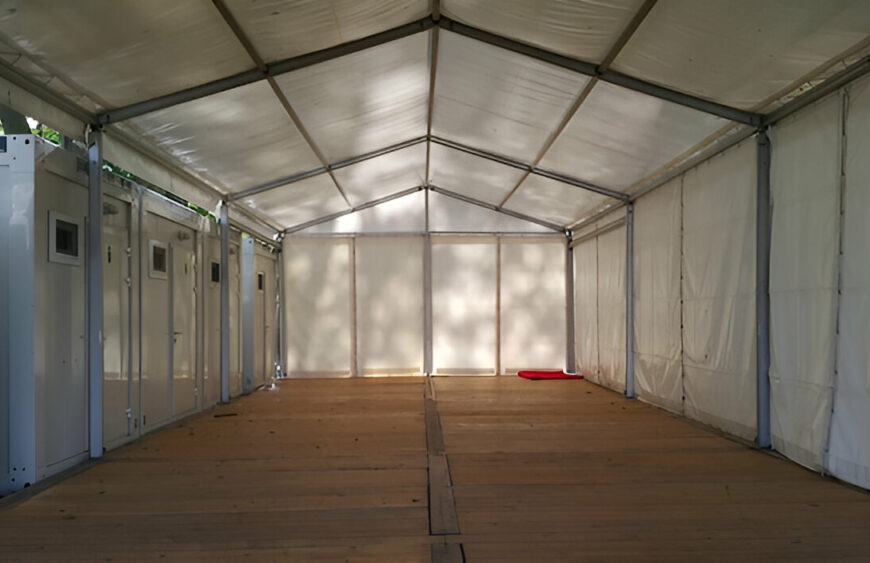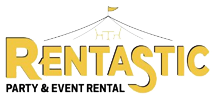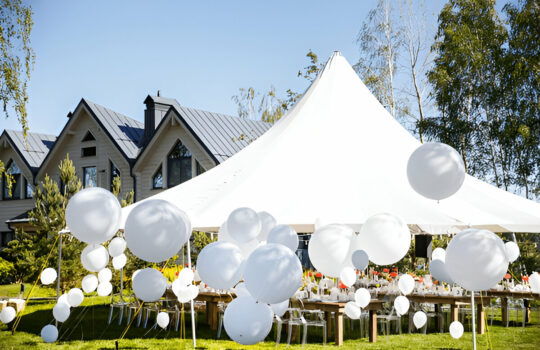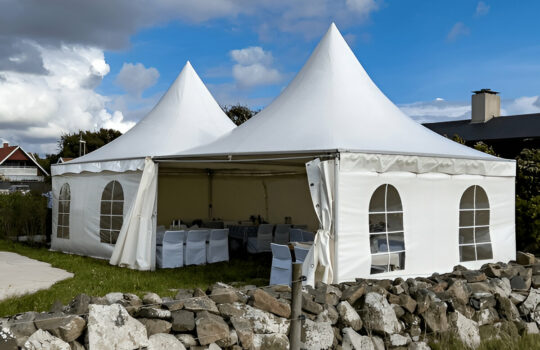DIY Tent Setup vs Professional Rental: What’s the Difference?
March 17, 2025 2025-03-17 3:31DIY Tent Setup vs Professional Rental: What’s the Difference?

DIY Tent Setup vs Professional Rental: What’s the Difference?
Introduction
In the world of event planning, one of the most fundamental decisions you’ll face is whether to handle tent setup yourself or hire professionals. This choice impacts not just your budget, but also your stress levels, event quality, and overall experience. According to a recent survey by EventMB, 78% of event planners reported that venue and setup logistics represent their biggest planning challenge.
This comprehensive guide explores the key differences between DIY tent installation and professional rental services, helping you make an informed decision for your next outdoor gathering, whether it’s a wedding, corporate event, or backyard celebration.
The Growing Outdoor Event Industry
The outdoor event industry has seen remarkable growth in recent years, with the global event tent market projected to reach $2.9 billion by 2026, growing at a CAGR of 4.8% from 2021. This surge reflects changing preferences toward open-air gatherings, accelerated by pandemic-related safety concerns and a growing appreciation for natural settings.
According to the Wedding Report, nearly 35% of weddings now take place in outdoor settings, requiring some form of temporary shelter. Similarly, corporate events have embraced the outdoors, with 42% of companies reporting they’ve organized an outdoor function in the past year.
DIY Tent Setup: The Complete Breakdown
The Appeal of DIY
The do-it-yourself approach to tent setup has distinct advantages that make it appealing to many event hosts:
1. Cost Savings
The most obvious benefit of DIY tent setup is cost reduction. By eliminating labor fees, you can save approximately 30-45% compared to professional services. For a standard 20’x20′ frame tent, professional installation might cost $250-400 in labor alone.
2. Scheduling Flexibility
DIY installation allows you to work according to your own timeline. You can set up days in advance or make last-minute adjustments without coordinating with a rental company’s schedule.
3. Hands-On Control
Some hosts prefer the hands-on approach, allowing them to ensure everything meets their expectations exactly as envisioned.
The Challenges of DIY
While the DIY route offers advantages, it comes with significant challenges:
1. Physical Demands
Even small tents require considerable physical effort. A standard 20’x20′ frame tent weighs approximately 200-300 pounds and requires 3-4 physically capable adults to safely erect. According to industry data, 65% of DIY tent installers underestimate the physical requirements involved.
2. Technical Knowledge Gap
Without proper experience, you may face challenges in:
- Assessing ground conditions
- Proper tensioning
- Weather adaptations
- Structural integrity verification
The American Rental Association reports that improper tension is the leading cause of tent failure in DIY installations, accounting for 47% of all reported incidents.
3. Time Commitment
First-time installers typically require 3-4 times longer than professionals. What professionals might accomplish in 2 hours could easily become an 8-hour project for novices.
4. Equipment Requirements
DIY installation requires various tools that you may not have on hand:
- Sledgehammers
- Measuring tools
- Ladders
- Safety equipment
- Vehicle capable of transporting tent components
5. Liability Concerns
Without professional setup, you assume full responsibility for:
- Structural safety
- Compliance with local regulations
- Damage to the tent
- Potential accidents
A study by the Event Safety Alliance found that DIY tent installations are 3.2 times more likely to experience safety incidents than professionally installed structures.
Professional Tent Rental: The Complete Breakdown
The Benefits of Professional Services
Professional tent rental services offer numerous advantages that often justify their higher cost:
1. Expertise and Experience
Professional installers bring valuable expertise to your event:
- Knowledge of proper anchoring techniques
- Understanding of wind load requirements
- Experience with various ground conditions
- Familiarity with local codes and regulations
According to industry surveys, professional teams install an average of 200+ tents annually, building significant practical knowledge.
2. Time Efficiency
A professional crew of 3-4 people can typically install a 20’x20′ frame tent in 1-2 hours, compared to the 6-8 hours it might take inexperienced individuals. This efficiency extends to dismantling as well.
3. Comprehensive Services
Most rental companies offer additional services beyond basic installation:
- Site assessment and recommendations
- Custom sizing and configuration
- Integration with other rental items (tables, chairs, lighting)
- Weather monitoring and emergency response plans
4. Quality and Maintenance
Professional rental companies maintain their inventory to high standards:
- Regular cleaning and sanitizing
- Structural inspection between uses
- Replacement of worn components
- Professional repair of damages
Event Rental Industry Alliance standards require member companies to perform 12-point safety inspections before each installation.
5. Insurance and Liability Protection
Professional services typically include:
- Liability insurance coverage
- Certified installation compliance
- Assumption of responsibility for structural issues
- Weather monitoring during multi-day events
According to a survey by Special Events Magazine, 87% of professional rental companies carry at least $1 million in liability coverage.
The Drawbacks of Professional Services
Despite their advantages, professional services have some drawbacks:
1. Higher Costs
Professional installation adds 30-45% to basic tent rental costs, representing a significant budget consideration.
2. Scheduling Constraints
You’ll need to work within the rental company’s availability, which can be challenging during peak season (May-September) when some companies are booked 2-3 months in advance.
3. Limited Customization
Some rental companies have restrictions on:
- Decoration methods
- Attachment of external elements
- Ground staking options
- Placement locations
4. Minimum Rental Periods
Most professional services require a minimum rental period of 1-3 days, even if your event lasts only a few hours.
Comparing Costs: The Real Numbers
DIY Tent Purchase and Setup
For a quality 20’x20′ frame tent purchase:
- Tent purchase: $1,500-3,000
- Required tools: $150-300
- Transportation: Variable
- Time value (8 hours at $25/hr): $200
- Total approximate cost: $1,850-3,500+
Professional Tent Rental and Setup
For the same 20’x20′ frame tent:
- Tent rental (1-3 days): $300-500
- Professional installation: $200-400
- Delivery fees: $50-150
- Total approximate cost: $550-1,050
For one-time or infrequent events, professional rental is typically more cost-effective. The break-even point for tent ownership versus rental is generally around 4-5 events, depending on tent quality and maintenance costs.
Making the Right Choice: Key Considerations
Event Type and Importance
Consider the nature of your event:
Better for DIY:
- Casual backyard gatherings
- Small family reunions
- Camping trips
- Youth group functions
Better for Professional Installation:
- Weddings and formal celebrations
- Corporate events
- Large community gatherings
- Any event where weather protection is critical
According to wedding planners, 92% recommend professional tent services for wedding receptions, citing the high stakes and desire for flawless execution.
Site Conditions
Your location plays a crucial role:
DIY-Friendly Conditions:
- Level ground
- Soft soil good for staking
- Protected from strong winds
- Easy vehicle access
- Ample setup space
Conditions Requiring Professional Expertise:
- Sloped terrain
- Hard surfaces requiring weighted anchoring
- High wind exposure
- Limited access points
- Space constraints
Weather Considerations
Climate factors significantly impact tent setup decisions:
DIY-Manageable Weather:
- Mild temperatures
- Low wind forecast
- Minimal rain chance
- Short event duration
Weather Necessitating Professional Support:
- High wind areas (15+ mph)
- Rain or storm possibilities
- Extended multi-day events
- Seasonal extremes
A study by the Rental & Event Association found that 40% of DIY tent installations during adverse weather conditions experienced some form of compromise, compared to just 8% of professional installations.
Equipment Requirements
Consider size and complexity requirements:
Suitable for DIY:
- Pop-up canopies
- Small frame tents (up to 10’x20′)
- Simple structures without sidewalls
Better for Professional Installation:
- Large frame tents (20’x20′ and larger)
- Pole tents of any significant size
- Tents requiring sidewalls or flooring
- Custom or complex configurations
Timeline and Flexibility
Your schedule may influence your decision:
DIY Advantages:
- Can be set up exactly when needed
- Can accommodate last-minute changes
- No need to coordinate with external providers
- Can be left up indefinitely if on your property
Professional Advantages:
- Guaranteed setup timeline
- Rapid installation regardless of weather
- Emergency support during rental period
- Scheduled teardown without your effort
Best of Both Worlds: Hybrid Approaches
Many event hosts opt for middle-ground solutions:
1. DIY with Delivery Service
Some companies offer delivery and pickup without installation. This eliminates transportation challenges while still allowing self-installation.
2. Professional Setup with Extended Rental
Booking professional installation with an extended rental period provides peace of mind while maximizing value.
3. DIY with Professional Consultation
Some rental companies offer consulting services where they advise on DIY setup without performing the labor themselves.
4. Professional Setup for Complex Elements Only
You might handle simple pop-up tents yourself while hiring professionals for larger or more complex structures.
Case Studies: Real-World Examples
Wedding Reception Success
Sarah and Michael planned an 80-guest backyard wedding and initially considered DIY tent setup to save $600. After researching, they opted for professional installation, which proved crucial when unexpected wind gusts hit during the reception. The professional installation, properly secured with adequate staking and tension, withstood 25 mph winds without issue.
Corporate Event Lesson
A technology company organized an employee appreciation day and decided to handle tent setup internally to promote team building. Despite having 8 staff members, the installation took over 5 hours and resulted in uneven tensioning. When afternoon heat caused the vinyl to expand, one section collapsed, disrupting activities and requiring emergency repairs.
Family Reunion Balance
The Rodriguez family holds an annual 50-person reunion and found a hybrid approach works best. They handle simple pop-up canopies themselves for activity areas but hire professionals for the main dining tent. This approach saves approximately 40% compared to full professional services while ensuring the most critical structure is properly installed.
Tent Alternatives Worth Considering
If neither DIY nor professional tent rental seems ideal, consider these alternatives:
1. Semi-Permanent Structures
Engineered tension canopies offer longer-term solutions with professional one-time installation.
2. Venue with Built-In Coverage
Many outdoor venues offer permanent pavilions or covered areas as part of their rental package.
3. Indoor/Outdoor Hybrid Venues
Spaces with large opening walls or indoor areas with outdoor access provide weather flexibility without tenting requirements.
4. Sailcloth or Stretch Tent Systems
Modern tensile structures offer easier DIY setup with more weather adaptability than traditional tents.
Final Decision Framework
When making your final decision, ask yourself these questions:
- Budget Priority: Is cost saving a primary concern, or is peace of mind worth the additional expense?
- Experience Level: Have you or your team successfully installed similar structures before?
- Physical Capabilities: Do you have enough physically capable helpers for safe installation?
- Time Availability: Can you allocate sufficient time for setup and takedown?
- Event Criticality: How important is flawless execution to your event’s success?
- Weather Predictability: How reliable is the forecast, and what are the contingency options?
- Equipment Complexity: Does your event require specialized tent features or additions?
Conclusion
The choice between DIY tent setup and professional rental services ultimately depends on your specific circumstances, priorities, and event requirements. For casual, smaller gatherings with simple shelter needs and adequate help, the DIY approach can provide significant savings. For important celebrations, larger events, or situations involving complex setups, professional services often prove well worth the investment.
Whichever route you choose, proper planning remains essential. Request quotes from multiple vendors, establish clear timelines, confirm all details in writing, and always have a weather contingency plan in place. With careful consideration of the factors outlined in this guide, you can make an informed decision that ensures your event’s success while aligning with your budget and peace-of-mind requirements.







